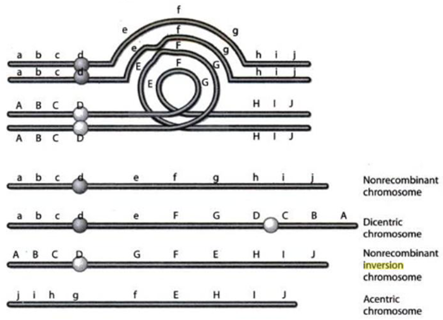why The chromatids formedby recombination within the inversion loop of a paracentric inversionheterozygote containtwo centromeres or none, instead of the normal one ?
Genetic Variation
Genetic variation refers to the variation in the genome sequences between individual organisms of a species. Individual differences or population differences can both be referred to as genetic variations. It is primarily caused by mutation, but other factors such as genetic drift and sexual reproduction also play a major role.
Quantitative Genetics
Quantitative genetics is the part of genetics that deals with the continuous trait, where the expression of various genes influences the phenotypes. Thus genes are expressed together to produce a trait with continuous variability. This is unlike the classical traits or qualitative traits, where each trait is controlled by the expression of a single or very few genes to produce a discontinuous variation.
why The chromatids formed
by recombination within the inversion loop of a paracentric inversion
heterozygote contain
two centromeres or none, instead of the normal one ?
When the region between two breaks of the same chromosome rotate 180°, it results in chromosomal aberration called inversion. When the inversion occurs between the arms of the same chromosome, it is called paracentric but when inversion involves the centromere along with arms it is called pericentric.
If we look at the mechanism of the suppression in an inversion of heterozygotes with a paracentric inversion. The crossover within the inversion loop Is given below. The 2 non-sister chromatids which are not allowed in crossover ultimately ends up in the normal gametes that carry either the wild-type or the inverted chromosome. The products of the crossover are an acentric chromatid and a dicentric instead of being a simple allele’s recombination.

Step by step
Solved in 3 steps with 1 images









